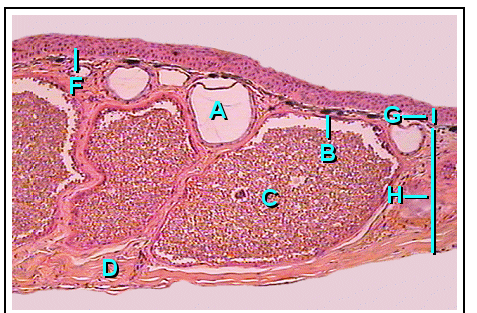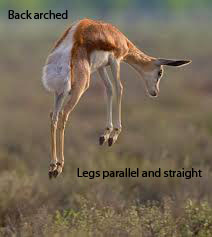Honest Signals
Biology 342 Fall 2015
Mikela Sheskier and Shirin Porkar-Aghdam
M E C H A N I S M
C A U S A T I O N
How do the behaviors work in their current form?
What are the immediate factos relevant for the behavior to occur?
Aposematism in Granular Poison Frogs: 
[untitled image of Section through frog skin. A: Mucus gland, B: Chromophore, C: Granular poison gland, D: Connective tissue, E: Stratum corneum, F: Transition zone, G: Epidermis, and H: Dermis.] retrieved November 29, 2015 from: https://en.wikipedia.org/wiki/Amphibian#/media/File:FrogSkin.pngThe chemical defense poisons exhibited by most aposematic organism have been shown to be produced de novo (i.e. at the beginning) of physical development, by dietary sources, or appropriated from symbiotic organisms (Santos, 2003 ). The compounds contributing to this toxicity include amines, peptides, proteins, steroids, and both water-soluble and lipid-soluble alkaloids (Santos, 2003). Such compounds are typically considered to be noxious rather than fully poisonous, meaning that predators will be deterred rather than lethally poisoned by the substances present on the skin, facilitating the process of associative learning between species features (e.g. coloration) and noxious taste (see section on Ontogeny). The Granular glands, composed of centrally placed nuclei, that are responsible for these secretions typically require considerable stimulation to produce their milky poisonous secretions (Noble 1931). When the toad is stimulated via external predatory cues, granular glands secrete the noxious and possibly lethal secretion which may induce adverse taste, vomiting, and swelling in toad predators (Pough et al 1999; Biedermann 1930). |
Stotting:
[This is a young springbok stotting/pronking. It was photographed in Etosha National Park in Namibia] retrieved November 28, 2015 from: https://commons.wikimedia.org/wiki/File:Springbok_pronk.jpgStotting is characterized by a "leaping off the ground with all four legs stiff and straight" (FitzGibbon et al. 1988). The behavior occurs when there are specific cues in the environment, such as a predator or a possible mate. The frequency of stotting is also adjusted to the type of predator that is in its vicinity. For insance, FitzGibbon et al. (1988) found that Thomson's gazelles were more likely to stot in response to coursing predators, than stalking predators. However there are other releasing factors such as sudden appearance of a stimulus or proximity of another (even non predatory) organism (Walther, 1969), suggesting that stotting approximates a "fight-or-flight" response. Stotting is also a function of the organisms health, as found in gazelles that stot less in the dry seasons than in the wet seasons (FitzGibbon et al. 1988). On first glance, stotting seems like an ineffcient use of energy in the situation of predator evasion. However displaying that the organism has the energy required to perform this behavior is a signifier for the animals general agility.
[Graphical representation of a stotting response to a predator] retrieved November 29, 2015 from: https://paws4acause331.wordpress.com/2012/04/ |

